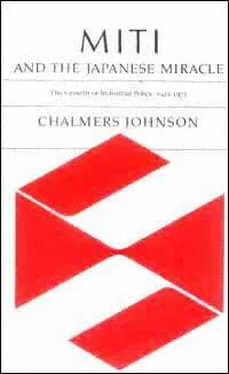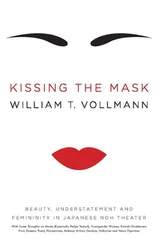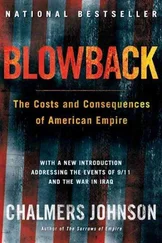Chalmers Johnson - MITI and the Japanese miracle
Здесь есть возможность читать онлайн «Chalmers Johnson - MITI and the Japanese miracle» весь текст электронной книги совершенно бесплатно (целиком полную версию без сокращений). В некоторых случаях можно слушать аудио, скачать через торрент в формате fb2 и присутствует краткое содержание. Год выпуска: 2007, Издательство: Stanford University Press, Жанр: Старинная литература, на английском языке. Описание произведения, (предисловие) а так же отзывы посетителей доступны на портале библиотеки ЛибКат.
- Название:MITI and the Japanese miracle
- Автор:
- Издательство:Stanford University Press
- Жанр:
- Год:2007
- ISBN:нет данных
- Рейтинг книги:3 / 5. Голосов: 1
-
Избранное:Добавить в избранное
- Отзывы:
-
Ваша оценка:
- 60
- 1
- 2
- 3
- 4
- 5
MITI and the Japanese miracle: краткое содержание, описание и аннотация
Предлагаем к чтению аннотацию, описание, краткое содержание или предисловие (зависит от того, что написал сам автор книги «MITI and the Japanese miracle»). Если вы не нашли необходимую информацию о книге — напишите в комментариях, мы постараемся отыскать её.
MITI and the Japanese miracle — читать онлайн бесплатно полную книгу (весь текст) целиком
Ниже представлен текст книги, разбитый по страницам. Система сохранения места последней прочитанной страницы, позволяет с удобством читать онлайн бесплатно книгу «MITI and the Japanese miracle», без необходимости каждый раз заново искать на чём Вы остановились. Поставьте закладку, и сможете в любой момент перейти на страницу, на которой закончили чтение.
Интервал:
Закладка:
At a time when the readjustment of industries is being carried out on a large scale, there are still entrepreneurs living on their unearned incomes. Concerning this, the minister of commerce and industry, Kishi, . . . emphasized the necessity of maintaining a strict control over various industries, causing a profound sensation among the leaders of industrial circles. . . . The minister of commerce and industry has been kept busy preparing a concrete plan in order to make the control companies function as national policy companies. . . . The directors of the companies, although they are regarded as the responsible authorities, are still remaining as they were before.
18
Of all the members of the council, the one Kishi feared and resented mostbecause of his long association with MCI and his insider's knowledgewas Fujihara. In fact, on November 17, 1943, after the founding of the Munitions Ministry on November 1, Fujihara was secretly appointed a state minister without portfoliothe same rank as Kishiand placed within the ministry to oversee his activities. Nonetheless, the evidence indicates that Fujihara was every bit as alarmed as Kishi by the ineffectiveness of the control associations at a time when the war was entering its most dangerous phase for Japan. After several inspection trips Fujihara reported to the council that there was no real shortage of coal, only inefficiency and negligence by the mine operators, and that aircraft production was stymied not by a shortage of aluminumonly 55 percent of the aluminum available was being used for airplanesbut by the intense competition for and hoarding of materials by the army and navy.
19
Kishi devised two answers to these various problems: the enactment of a new law to enhance governmental supervision over the control associations, and a total reorganization of the government's economic bureaucracies. On October 31, 1943, an extraordinary session of the Diet passed the Munitions Companies Law (Gunju Kaisha Ho*, number 108), which sought to establish once and for all the principle contained in the old Konoe New Structure Movement of 1940namely, the separation of management from ownership. It authorized the sta-
Page 168
tioning of governmental officials called "munitions supervisors" in each factory and made these officials, rather than the industrywide control associations, responsible for seeing that targets were fulfilled and rules followed.
As it turned out, this law came too late to make much difference to the war effort. It merely added another layer of officialdom on top of the control associations, which still allocated materials and distributed products on an industrywide basis. The Munitions Companies Law was the last serious effort of the state-control group before the Allied occupation, and it remained a compromise; with the cabinet council looking on and the Diet increasingly dubious about Tojo's * leadership, Kishi could not go beyond the basic parameters of the capitalist system. The government continued to pay dividends to owners and guarantee their costs of production until June 1945, when the zaibatsu were only too happy to see the government buy out and nationalize their ruined munitions plants.
20
The Munitions Companies Law was not an important precedent for postwar industrial policy (although the law of 1948 authorizing state control of the coal industry has strong similarities to it). The reorganization of the economic ministries, however, had lasting consequences. In essence the government abolished the Cabinet Planning Board and four old ministriesCommerce and Industry, Agriculture and Forestry, Communications, and Railroadsand replaced them with three new ministriesMunitions (Gunju-sho*), Agriculture and Commerce (Nosho-sho*), and Transport and Communications (Un'yu Tsushin-sho*). Concrete plans for this reorganization were drafted on the MCI side by Yamamoto Takayuki, the first MITI vice-minister in 1949; on the CPB side they were drafted by Tanaka Shin'ichi, deputy director of MITI's Enterprises Bureau after 1949, and Morisaki Hisatoshi, director of MITI's Heavy Industries Bureau in 1964.
The new Munitions Ministry (MM) was the brightest star in the firmament. The CPB and MCI's General Affairs Bureau were united into a single new agency for both planning and execution; it was called the General Mobilization Bureau (Sodoin* Kyoku), with Shiina Etsusaburo* as director. MCI's old bureaus for Steel, Machinery, Light Metals, Nonferrous Metals, Chemicals, and Fuel, plus the now defunct Communications Ministry's Electric Power Bureau, went to Munitions. MCI's old bureaus for Textiles, Daily Life Commodities, and Prices went to the new version of the old Ministry of Agriculture and Commerce. MCI's Enterprises Bureau continued on in MM as the Enterprises Readjustment Headquarters (Kigyo* Seibi Honbu), although it did not have many enterprises left to convert to war production. The few remaining
Page 169
functions of MCI in the area of international trade were transferred to the Greater East Asia Ministry. MM also established nine regional Munitions Supervision Departments (Gunju Kanri Bu), which are the concrete origins of the contemporary MITI regional bureaus. Finally, the factory inspectors of the Army-Navy Aviation Headquarters were integrated into a new Aircraft Ordnance General Bureau within MM under Lieutenant General Endo * Saburo*.
From the perspective of 1945 Allied intelligence, Bisson thought that this structure plus the Munitions Companies Law had "largely rectified" the chaotic situation that had prevailed in Japan's war economy during 1942 and 1943. He was, however, astonished that MCI"this old-line standby of the business interests"and not the military, as had been supposed in Washington, had been responsible for creating the new ministry.
21
The MCI officials who went to MM, a contingent that included all of MITI's later industrial faction, were much less sanguine about their prospects for success. Even Shiina, despite his own Manchurian background, later complained bitterly about having to work with arrogant military officers; and many able officials, such as Ueno Koshichi* (MITI vice-minister from 1957 to 1960), found their effectiveness reduced because of clashes with military officers.
22
One of the first things the former MCI men did when the war was over was to kick out the military officers while retaining the ministry's expanded jurisdiction.
The chief significance of MM for later industrial policy is that MITI managed to retain all of the functionsincluding electric power, airplane manufacture, and industrial planningthat had first been brought together in MM. The experience of working as factory supervisors was also important for later MITI cadres. And for some the Munitions Ministry would have a great personal meaning: two MITI vice-ministers, Sahashi (196466) and Morozumi (197173), met and married women who served in MM's Women's Volunteer Corps. Perhaps also worth mentioning, Prime Minister Tojo* evicted the prestigious Board of Audit (Kaikei Kensa-in) from its offices in Kasumigaseki and moved his new MM there from the old MCI headquarters near the Kabuki theater. As a result of the war, the industrial policy bureaucrats finally made it to the Tokyo equivalent of Whitehall, never again to leave.
At the level of top leadership some arrangements were made for MM that would soon have serious political consequences. After November 1, 1943, Tojo served concurrently as prime minister, minister of the army, chief of the General Staff, and minister of munitions. He took on MM not simply as a gesture to give it more prestige, even
Page 170
though he never exercised any personal administrative control over the ministry. It was instead, as Okochi * Shigeo stresses, a final attempt to overcome the structural disunity of the Japanese government that had been imposed on it by the Meiji Constitution. Tojo* was attempting to achieve elementary coordination of his government by assuming a one-man dictatorship, despite the fact that he could never achieve control over the navy.
Читать дальшеИнтервал:
Закладка:
Похожие книги на «MITI and the Japanese miracle»
Представляем Вашему вниманию похожие книги на «MITI and the Japanese miracle» списком для выбора. Мы отобрали схожую по названию и смыслу литературу в надежде предоставить читателям больше вариантов отыскать новые, интересные, ещё непрочитанные произведения.
Обсуждение, отзывы о книге «MITI and the Japanese miracle» и просто собственные мнения читателей. Оставьте ваши комментарии, напишите, что Вы думаете о произведении, его смысле или главных героях. Укажите что конкретно понравилось, а что нет, и почему Вы так считаете.












